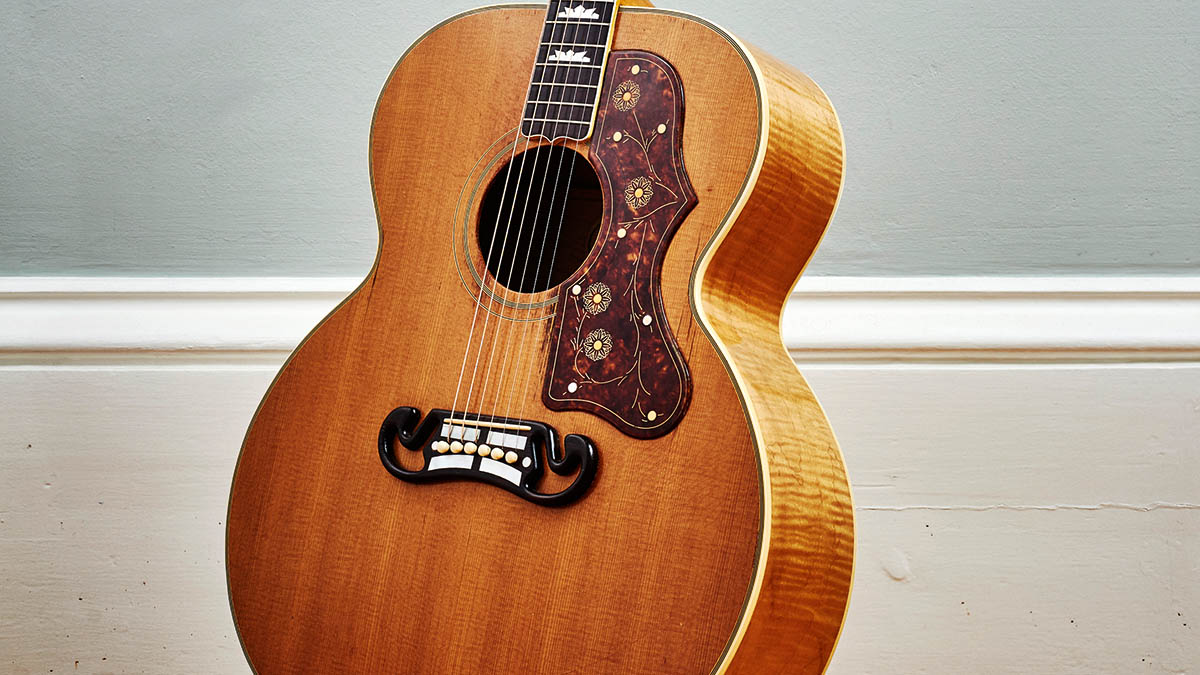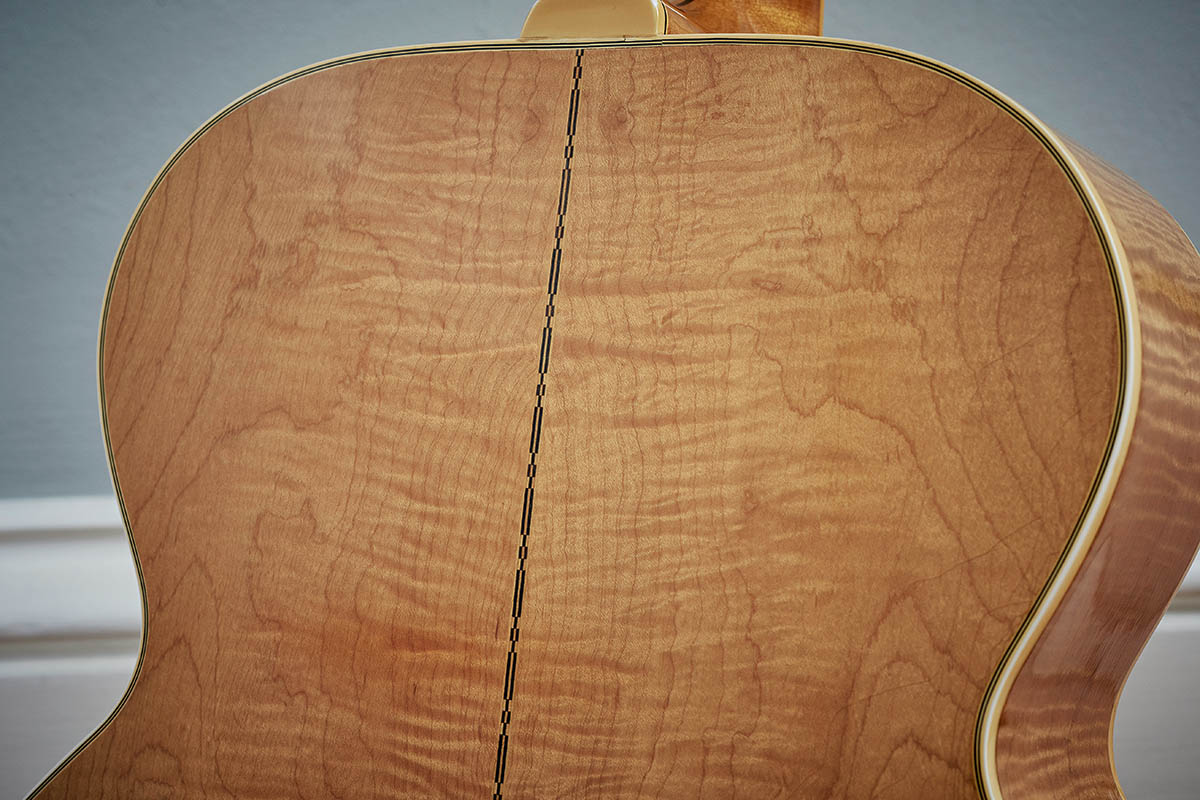The evolution of the Gibson SJ-200: from 1937 custom order to its coronation as the undisputed “king of flat-tops”
The supersized acoustic is a holy grail guitar for many a singer-songwriter, with classy ornamentation gilding an instrument with a breathtaking voice

Gibson’s SJ-200 acoustic guitar first appeared in the 1930s. Around this time, Gibson and Epiphone were going head to head in a size war – each trying to outdo the other under the premise ‘bigger is better’ while equating instrument dimensions with power, projection and, ultimately, status.
This spirit of competition led to several developments, notably Gibson’s 18-inch-wide Super 400 and Epiphone’s 18½-inch-wide Emperor. These supersize archtops were deemed flagship models, and both sat at the top of their respective price lists with a $400 tag.
Along with the Super 400, Gibson unveiled its Jumbo flat-top (named after the colossal elephant) in 1934 in order to compete directly with Martin’s large-body Dreadnought design (named after the gigantic battleship). Also in ’34, Gibson’s seminal L-5 archtop (which celebrates its 100th anniversary this year) was “Advanced” from 16 to 17 inches in width.
It was only a matter of time before Gibson introduced a supersize flat-top with the kind of ornamentation that set its leading archtops apart, and the SJ-200 took many of its cues from the Advanced L-5. In fact, from its 1937 debut, early examples of the SJ-200 were labelled “L-5 Spec”.

As well as having a similar body shape and size, the SJ-200 sports an L-5-style bound, pointed fingerboard. Along with fancy inlays and multiple-ply body binding the similarities are clear. The most famous of these early custom-order prototype guitars belonged to ‘singing cowboy’ Ray Whitley.
The bygone era of singing cowboys was a Hollywood phenomenon, and Gibson jumped at the chance to supply a rapidly growing demand among the celebrities of the day. Gene Autry, Ray ‘Crash’ Corrigan, Jimmy Wakely and other cowboy movie stars all appeared with Gibson’s “king of the flat-tops”. And with silver screen endorsements of such calibre, the instrument soon gained iconic status.
First appearing in Gibson’s 1938 catalogue, the $200 “Super Jumbo” was renamed the Super Jumbo 200 (hence SJ-200) by the following year. After the war, it was advertised simply as the J-200 but continued to be labelled “SJ-200” well into the 1950s.
Get The Pick Newsletter
All the latest guitar news, interviews, lessons, reviews, deals and more, direct to your inbox!
Consequently, either name is used to refer to the same model. And though the rounder-bodied S/J-200, J-180 and J-185 guitars are often dubbed Jumbos exclusively, many Dreadnought-style Gibson flat-top models are also, strictly speaking, Jumbos (J-45, J-50, J-55 et cetera). Additionally, it’s worth noting the ‘S’ designation should not be confused with the Gibson SJ/Southerner Jumbo/Southern Jumbo.
The singing cowboys may have helped popularise the SJ-200 in the beginning, but the model is perhaps better known as an instrument of choice for the likes of the Everly Brothers, Elvis Presley, Tom Petty, Orianthi, Bob Dylan and Pete Townshend – all of whom have been honoured by Gibson with signature models.

Emmylou Harris, too, is an SJ-200 devotee. The Grammy-winning acoustic legend even custom-ordered a guitar from Gibson based on her ex-Gram Parsons SJ-200. She also collaborated on a unique signature model – the L-200 – that features a reduced width of 15 inches.
Similarly, players who think the SJ-200’s 17-inch width is a bit too much might find the smaller J-180/Everly Brothers and J-185 guitars more comfortable to play.
The evolution of the Gibson SJ-200: a timeline
- 1937: L-5-style custom-order instrument presented to Ray Whitley
- 1938: Advertised in catalogue as “Super Jumbo” priced $200; sunburst finish; rosewood back/sides
- 1939: Renamed Super Jumbo 200; mahogany Super Jumbo 100 released ($100)
- 1941: Ebony fingerboard changes to rosewood
- 1942: Double X-bracing changes to single X-bracing
- 1947: Advertised as J-200; maple back/sides
- 1948: Natural finish available (J-200N)
- 1961: ‘Closed’/Tune-o-matic bridge replaces ‘open’ bridge with non-adjustable saddle
- 1970s: Dove-style bridge with non-adjustable saddle; double X-bracing
- Current: Several SJ-200 models in Original, Modern, Artist and Custom Shop Collections
Rod Brakes is a music journalist with an expertise in guitars. Having spent many years at the coalface as a guitar dealer and tech, Rod's more recent work as a writer covering artists, industry pros and gear includes contributions for leading publications and websites such as Guitarist, Total Guitar, Guitar World, Guitar Player and MusicRadar in addition to specialist music books, blogs and social media. He is also a lifelong musician.
The heaviest acoustic guitar ever made? Two budding builders craft an acoustic entirely from concrete because they “thought the idea was really funny”
“For years, the only 12-string acoustics I got my hands on, the necks always pulled off after a bit. I earned a lot of money replacing them!” Why one of the UK’s most prolific luthiers is a bolt-on acoustic die-hard


![A black-and-white action shot of Sergeant Thunderhoof perform live: [from left] Mark Sayer, Dan Flitcroft, Jim Camp and Josh Gallop](https://cdn.mos.cms.futurecdn.net/am3UhJbsxAE239XRRZ8zC8.jpg)









